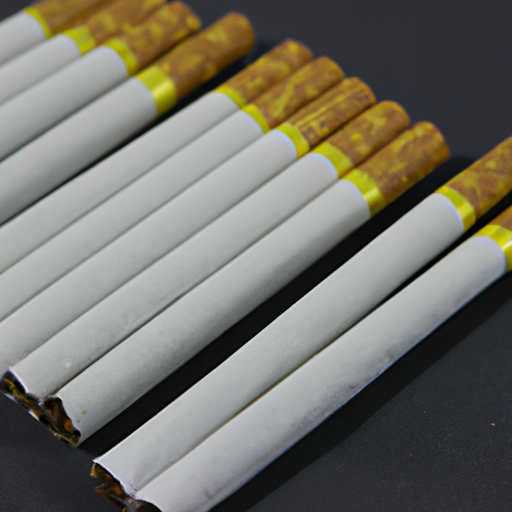
As I sit here, puffing on my cigarette, I can’t help but think about the role that cigarettes have played in my life and in the United Kingdom as a whole. Despite numerous campaigns and warnings about the dangers of smoking, cigarettes continue to be a prevalent part of our society. In this article, I will delve into the history of cigarettes in the UK, the current state of smoking, and the ongoing efforts to reduce smoking rates.
The history of cigarettes in the UK can be traced back to the 16th century when tobacco use became popularized by the Spanish and Portuguese. By the 19th century, tobacco was being marketed and sold in various forms, including cigarettes. However, it wasn’t until the early 20th century that cigarette smoking gained widespread popularity, thanks to mass production and marketing efforts.
In the 1950s and 1960s, smoking was seen as glamorous and sophisticated, with iconic images of movie stars and musicians puffing away on cigarettes. It wasn’t until the 1980s that the first major warnings about the health risks of smoking were introduced, with cigarette packets featuring the now-famous “Smoking Kills” slogan. Despite these efforts, smoking rates continued to rise, with the peak in the 1970s when nearly half of the UK population were smokers.
Fast forward to the present day, and the landscape of smoking in the UK is drastically different. Thanks to numerous anti-smoking campaigns and regulations, smoking rates have decreased significantly. According to the latest statistics, 15.5% of adults in the UK smoke, compared to 45% in the 1970s. This is a significant achievement, considering the UK has one of the lowest smoking rates in Europe.
So where do cigarettes stand in the UK today? While smoking rates have declined, cigarettes are still widely available and consumed. They are sold in supermarkets, convenience stores, and even vending machines. The average price for a pack of cigarettes is around £10, with prices varying depending on the brand and location. The UK government also heavily taxes cigarettes, with the majority of the cost being tax. This has made smoking a costly habit, but one that many people are still willing to pay for.
So why do people continue to smoke in the face of such high costs and health risks? As a smoker myself, I can say that it’s a combination of addiction and habit. Nicotine, the addictive substance in cigarettes, makes quitting a difficult feat. Many smokers also use cigarettes as a coping mechanism for stress and anxiety. The act of smoking itself can be seen as a comfort, with the ritual of lighting up and taking a drag providing a moment of relaxation.
However, the impact of smoking goes beyond the individual smoker. Second-hand smoke is a major concern, with non-smokers being exposed to the harmful chemicals in cigarettes when in the presence of smokers. This has led to the implementation of smoking bans in public spaces, including restaurants, bars, and even outdoor areas like parks and beaches. These bans have received some backlash from smokers who feel like their rights are being infringed upon, but the overall goal is to protect the health of non-smokers.
Aside from smoking bans, the UK government has also implemented other measures to reduce smoking rates. One of the most effective methods has been the introduction of plain packaging in 2016. This means that all cigarette packages now have a standard olive green color with graphic warnings covering 65% of the front and back of the pack. This has been proven to be more effective in deterring people, especially young individuals, from taking up smoking.
Another method that has been successful in reducing smoking rates is the increase in the legal age for purchasing cigarettes. In 2007, the legal age was raised from 16 to 18, making it more difficult for young people to access cigarettes. This, coupled with strict laws against selling cigarettes to minors, has made it more challenging for young individuals to start smoking.
Despite these efforts, there are still challenges when it comes to reducing smoking rates. The rise of new products such as e-cigarettes and heated tobacco products has posed new challenges in regulating and controlling tobacco use. These products are marketed as a healthier alternative to traditional cigarettes, but the long-term health effects are still unclear.
In conclusion, cigarettes in the UK have come a long way since their introduction in the 16th century. From being a symbol of glamour and sophistication to a widely condemned habit, cigarettes have been a significant part of our culture. While smoking rates have decreased, there is still work to be done in reducing the number of smokers in the UK. With ongoing efforts and regulations, I am hopeful that eventually, cigarettes will become a thing of the past. But for now, I’ll continue to enjoy my cigarette, knowing the consequences and risks that come with it.